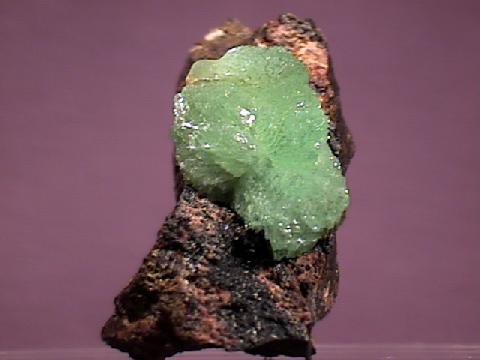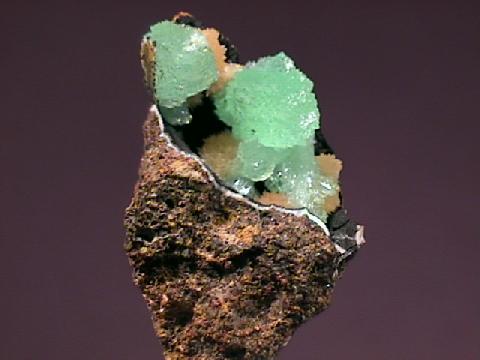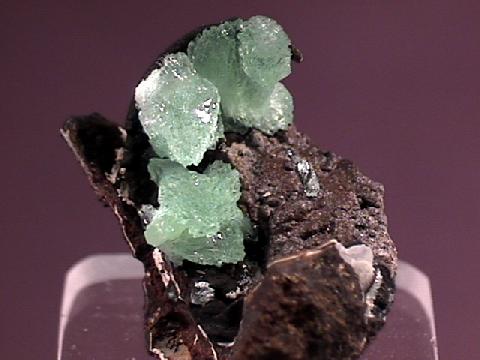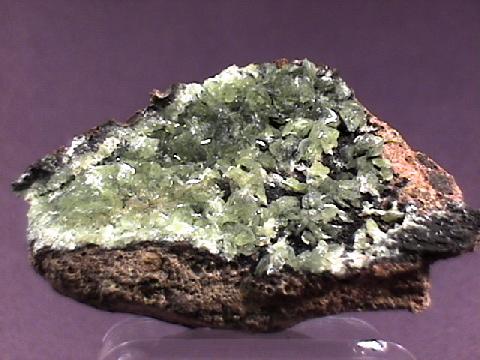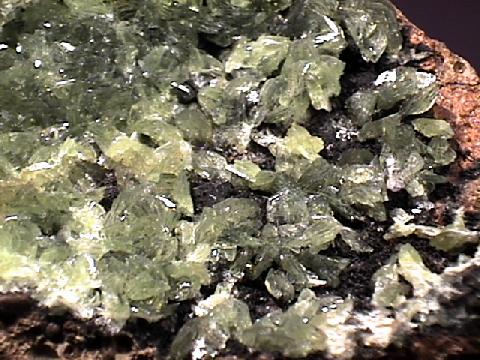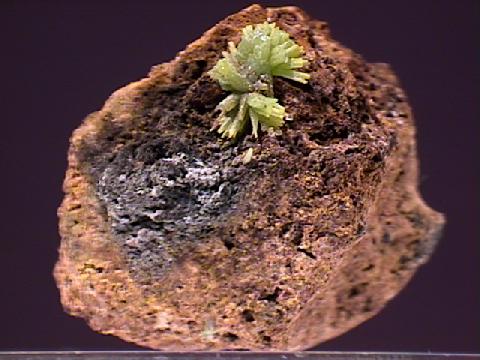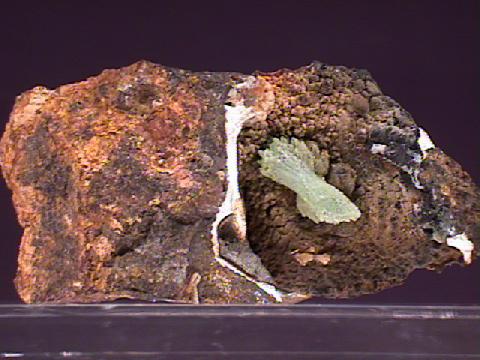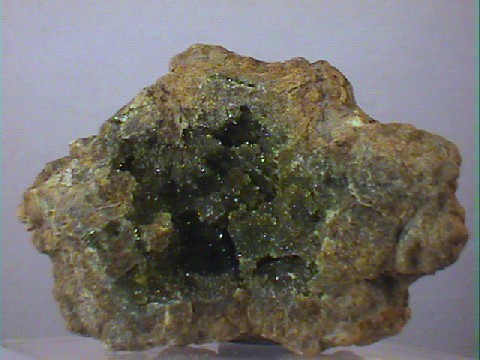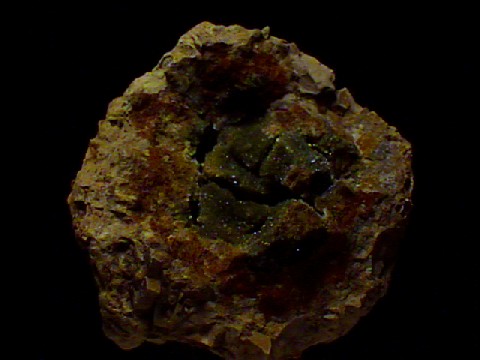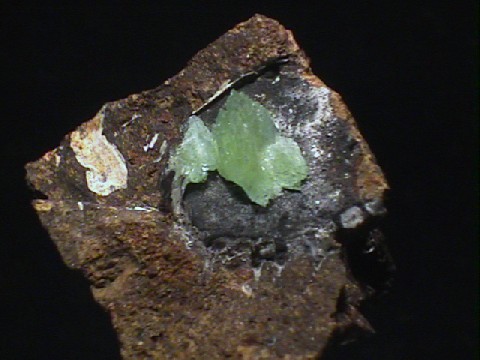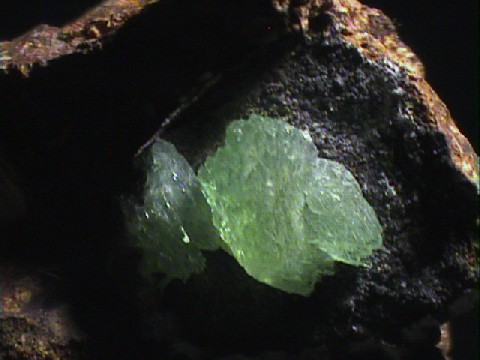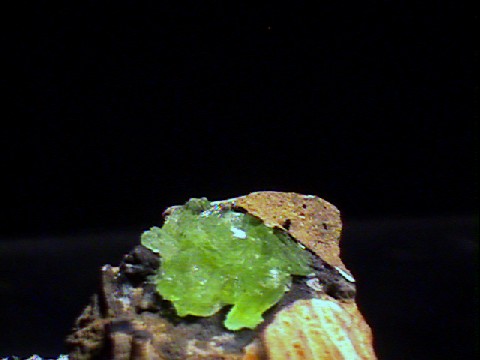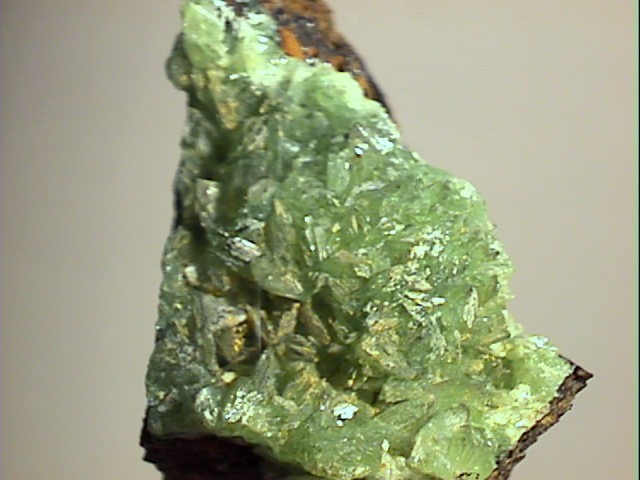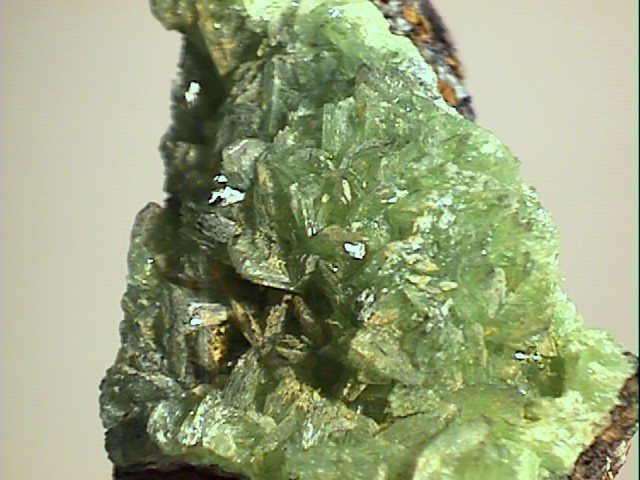 THE
MINERAL ANAPAITE
THE
MINERAL ANAPAITE
- Chemistry: Ca2Fe(PO4)2 - 4H2O, Hydrated Calcium Iron Phosphate
- Class: Phosphates
- Uses: only as a mineral specimen.
Specimens
Anapaite is rare and beautiful phosphate mineral. Or is it? Some mineral purists would dispute anapaite's inclusion into the mineral kingdom. The reason is that anapaite has a somewhat organic origin. In true pure mineralogical tradition, a mineral must have inorganic origins (ie. it is not made by a plant or animal). Anapaite is found in some fossil shell remains. But does this mean that the shell or bivalve formed the anapaite or did it just provide the needed calcium or change the environment of crystallization (such as the pH) needed for anapaite to form?
If anapaite is excluded, it will be the mineral kingdom's loss! For anapaite is a truly beautiful mineral. Its lime green color is attractive and is a jewel inside the otherwise uncrystallized remains of an ancient fossil shell. The scene almost reminds you of a virtual green pearl.
The triclinic crystals of anapaite are indistinct and this is very diagnostic, believe it or not! Perhaps it is the way or the environment in which anapaite forms, but the crystals look more like glass shards than like true crystals. Despite the lack of distinct forms, anapaite crystals are very different and would be a nice addition to anyone's collection.
PHYSICAL CHARACTERISTICS:
- Color is commonly green or white.
- Luster is vitreous.
- Transparency crystals are transparent to translucent.
- Crystal System is triclinic, bar 1
- Crystal Habits include characteristically indistinct prismatic crystals and aggregates.
- Hardness is 3.5
- Specific Gravity is approximately 2.8 (average for translucent minerals)
- Streak is white.
- Associated Minerals are limonite and vivianite. Anapaite often forms in fossil clam shells, coal beds (rarely) or phosphatic geodes.
- Notable Occurrences include Anapa (hence the name), Taman Peninsula, Russia; Kerch Peninsula, Crimea, Ukraine; Bellaver de Cerdena, Spain; Kings County, California, USA and Germany.
- Best Field Indicators are crystal habit, localities, associations with fossils and phosphatic geodes and color.

